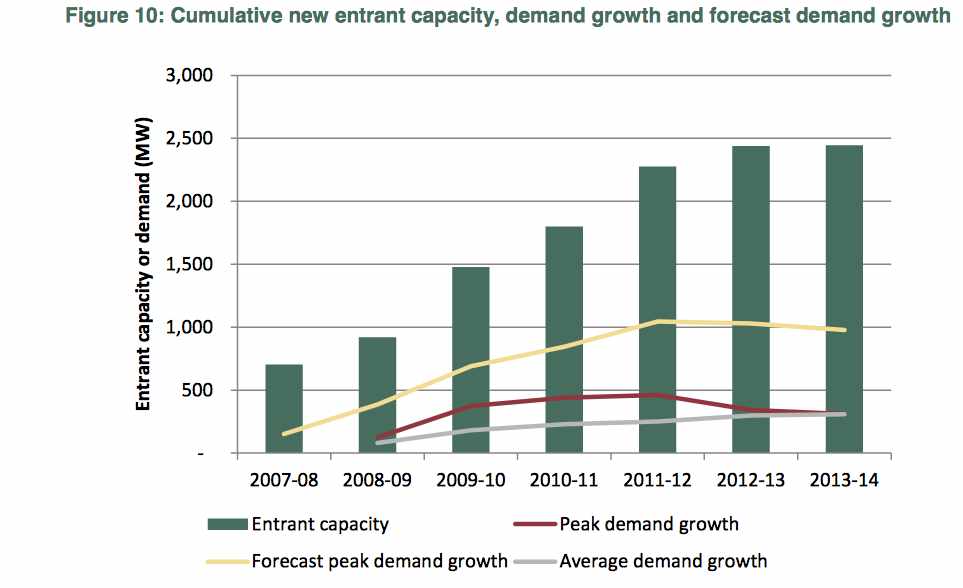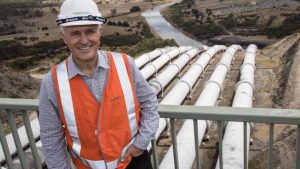WA has conceded its electricity market is unsustainable. Its wholesale prices are double the rest of Australia, $1 billion has been spent on fossil fuel generators that are not needed, and subsidies are costing taxpayers $600 million a year. A 55-page discussion paper looking at how the market can be reformed does not even mention the word solar. Instead, it canvasses importing coal from Indonesia.
A WA government review has revealed the full catastrophe of the state’s electricity market, highlighting the extraordinary waste and misdirected subsidies that are costing it billions of dollars, and has resulted in the highest generation costs in the country.
A discussion paper prepared by the Electricity Market Review says more than $1 billion has been spent on its controversial capacity mechanism, and as RenewEconomy reported last year, much of this has been spent on fossil fuel plants that have never been switched on.
This, and a reliance on ageing coal and gas-fired generation, has resulted in the state having wholesale electricity costs twice that of Australia’s eastern states. Last year, the government had to pay $600 million to subsidise the cost of electricity to consumers, and this cost is expected to total more than $2.5 billion over the coming four years.
Astonishingly, the report does not even canvass the role that renewable energy sources could play in addressing the problem. In a chapter on future fuel options, solar and wind energy are not mentioned once. Instead, the report canvasses the possibility of importing thermal coal from Indonesia so it can be burned in the state’s ageing coal generators.
The fact that the WA grid is unsustainable should come as a surprise to no one. The government has a history of throwing subsidies at fossil fuel generation, so much so that it even squeezed out the solar hot water technology in which the state was a world leader. Despite building the country’s first utility-scale solar power station, and supporting the worlds first multi-machine wave energy project and desalination plant, it has largely snubbed renewables, instead focusing on disastrous re-investments such as the ageing Muja power station.
As we pointed out earlier this year, it could be the first grid in the world to feel the full consequences of the “death spiral”. Even the grid operator concedes that 3/4 of homes and 90 per cent of businesses could turn to solar within a decade, yet this review canvasses none of these challenges or opportunities.
But the discussion paper prepared by the Electricity Market Review Project Office is instructive for illustrating just how dysfunctional the grid’s electricity market has become,
The paper’s conclusion on its capacity mechanism are revealing, particularly as there is a push by fossil fuel generators in the eastern states to introduce a similar mechanism.
The paper highlights that the capacity mechanism is a hopeless, ineffective subsidy that has resulted in $1 billion spent on fossil fuel generators – often diesel-fired peaking plants – that are rarely, and sometimes never, used.
The subsidy to these plants dwarfs the subsidies paid to large-scale wind farms and rooftop solar. The report says that these capacity-subsidised fossil fuel additions are used just 35 per cent of the time. That compares to the 50 per cent capacity factor of the state’s biggest wind farm, the 207MW Collgar installation.
This graph below highlights how the market operator got it completely wrong. The green blocks show how much capacity was added, the yellow line how much capacity was forecast to be needed, and the red line how much was in fact required at the peak.
As the report notes: “The costs of over-investment are not borne by the investors themselves, as they would be in the NEM and in most commodity markets, but by customers and ultimately by government, which provides a subsidy to shield customers from such costs.”
This is something that RenewEconomy highlighted in late 2012, in our story Dumb and dumber energy choices in the wild west, pointing to a $95 million diesel-fuel power plant that was built with a capacity subsidy. The plant will likely never be switched on: it is not needed and if it ever had to buy fuel, the cost would be too prohibitive to run economically.
 The discussion paper says the current high cost of electricity in the WA market is the major reason why Western Australian electricity tariffs are so high. This has resulted in the government paying an overall subsidy to the industry of more than $600 million in 2013/14,
The discussion paper says the current high cost of electricity in the WA market is the major reason why Western Australian electricity tariffs are so high. This has resulted in the government paying an overall subsidy to the industry of more than $600 million in 2013/14,
In the next four years, it says (see graph above) the average cost of electricity in the SWIS is projected to increase potentially by 20 per cent. This would mean that the annual subsidy would increase further, totalling more than $2.5 billion over the next four years.
“This is a major impetus for reform in itself,” it notes. But apart from tinkering with some market signals – adopting the market pricing system in the NEM, and opening the market up to more market competition – it studiously ignores the obvious solution: renewable energy.
There is not a single mention of solar in the entire 55-page report. Distributed generation – a mix of solar PV and battery storage – gets a cursory mention as an option for grid operators. Wind energy is only mentioned in passing in a listing of wind farms already in existence.
This should not be surprising. WA’s energy minister Mike Nahan is a former head of the right-wing think tank the Institute of Public Affairs who has rejected climate science (although, like Tony Abbott, he now says he accepts a certain role for humans), and dismisses renewable energy as a valid energy source. So too does the inquiry’s former head, Lyndon Rowe, who this week moved from the Energy Regulation Authority that he chaired to become chairman of Synergy, the state’s retailer and generator.
 The report says that wholesale prices in the state – often decided through bilateral contracts rather than the open market – average $180/MWh (see graph above). This is twice the average of the eastern states. What’s more, it is twice the cost of wind energy and more than the cost of solar. But the capacity mechanism subsidy favours the development of fossil fuel generators.
The report says that wholesale prices in the state – often decided through bilateral contracts rather than the open market – average $180/MWh (see graph above). This is twice the average of the eastern states. What’s more, it is twice the cost of wind energy and more than the cost of solar. But the capacity mechanism subsidy favours the development of fossil fuel generators.
Clearly, though, Nahan and Rowe recognise what is at risk: The state will lose its competitiveness.
“Increases in tariffs for both domestic and industrial customers will also continue to erode the state‟s competitiveness and may constrain economic growth to levels below what could otherwise be achieved,” the report says.
“While the next four years may see further increases in subsidies to customers, in the absence of reform the longer term outlook could be even more challenging. As we have discussed above, there will be upward pressure on both coal and gas prices and potential increases in network costs given asset replacement needs and the costs of servicing a peaky load profile.
“Taxpayers currently underwrite 76 per cent of capacity in the market either through direct ownership or bilateral contract commitments. Should the current industry structure and market mechanism remain, taxpayers will be required to fund the majority of new investment (network and generation).”
So what do they think might be the solution? They come up with this truly incredible suggestion. The report notes that the state has plenty of coal, it’s just that it is lying in ever deeper seams and is getting increasingly expensive to extract.
“If prices need to increase significantly (to make generation profitable) it may be that other coal resources become competitive or, more likely for power stations in the region of the Collie mine, there is the possibility of coal imports from countries such as Indonesia. This would provide an effective cap for domestic prices at import parity levels.”
WA, meanwhile, has some of the best solar and wind resources in the world. Dozens of proposals for large-scale solar plants and wind farms are stalled because, as Nahan made clear last year, he would rather that none were built.
Yet, the WA Renewable Energy Alliance, which unites many of the renewable energy developers in the state, as well as various industry groups, said in June that the state could be a world leader in renewables, and solar in particular.
“We could lead Australia – and the world,” it says. Because of the state’s excellent solar resources, it could become a leader in Australia for installed solar capacity, and utility-scale projects – a total of more than 2GW. It would also make it one of the grids with the most solar in any advanced economy in the world.








